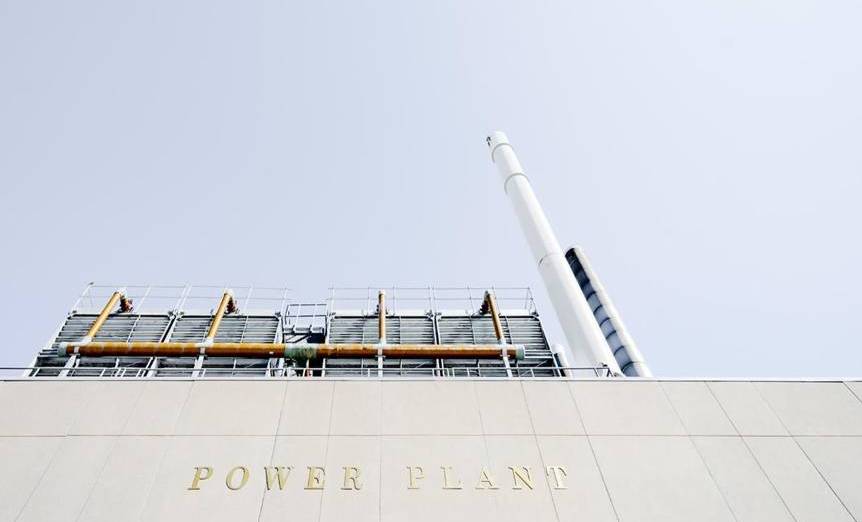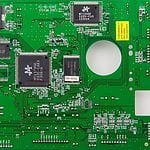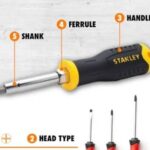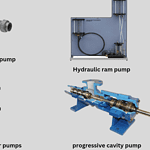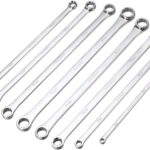A circuit breaker is a device that is used to open or close an electrical circuit. Circuit breakers are used in a variety of applications, including in residential and commercial buildings, industrial and utility facilities, and in vehicles.
Circuit breakers are also used in thermal power plants to protect the plant equipment from damage and to prevent fires from starting when there is an electrical fault. Thermal power plants use a variety of circuit breakers, including air-break, oil-break, and gas-break types.
Here are the different types of circuit breakers used in thermal power plants:
Types of circuit breakers used in thermal power plants:
1. Air Blast Circuit Breaker:
Air-break circuit breakers are the most common type of breaker used in thermal power plants. These breakers use compressed air to extinguish the arc that is created when the breaker is opened, making it the most efficient and effective type of circuit breaker.
The air blast circuit breaker is the preferred choice for thermal power plants because it can handle large amounts of current and is less likely to fail than other types of circuit breakers. The wire size used in an air blast circuit breaker depends on the voltage and current of the circuit.
2. Oil Circuit Breaker:
As the name suggests, oil circuit breakers use oil to quench the arc. When the breaker is opened, the oil is quickly vaporized, which creates a gap between the contacts and prevents the current from flowing.
Oil circuit breakers have several advantages over other types of circuit breakers. One advantage is that they can be used for very high-voltage applications. Another advantage is that they are less likely to be damaged by the high currents that can occur in thermal power plants.
There are two main types of oil circuit breakers: self-contained and external.
● Self-contained oil circuit breakers have all the necessary equipment, including the oil tank, within the breaker itself.
● External oil circuit breakers have the oil tank outside of the breaker.
Oil circuit breakers are used in a variety of applications, including power plants, industrial facilities, and substations. They are well-suited for use in environments where there is a need for high reliability and durability.
3. Gas-Break Circuit Breakers:
Gas-break circuit breakers are typically used in thermal power plants to protect high-voltage equipment from damage due to overcurrent. They’re also used to protect against overvoltage conditions.
Gas-break circuit breakers are designed to interrupt electrical current by creating a plasma arc between two electrodes in a gas-filled chamber. When the arc is created, the current is interrupted, and the circuit breaker trips.
4. Minimum Oil Circuit Breaker:
A minimum oil circuit breaker (MOCB) is a safety device used in thermal power plants to protect the circuit breaker from damage due to overheating. When the oil temperature in the breaker reaches a minimum value, the MOCB will open the circuit and interrupt the flow of current.
The MOCB is usually used in conjunction with a thermal relay or temperature measuring devices. The thermal relay is a device that is used to monitor the oil temperature in the circuit breaker.
If the oil temperature in the breaker reaches a certain value, the thermal relay will trip the breaker and open the circuit. This will protect the circuit breaker from being damaged by the heat of the current.
5. Vacuum Circuit Breaker (VCB):
A vacuum Circuit Breaker (VCB) is a device that interrupts the electrical circuit by creating a vacuum in the space between the two conductors.
The working of a VCB is based on the principle of electrical arc. When an arc is formed between the two conductors, it is quickly extinguished by the vacuum. This is because the vacuum does not allow the arc to continue burning.
VCBs are used in high-voltage applications like thermal power plants where conventional circuit breakers are not able to withstand high voltage. They are available in a variety of sizes and ratings, typically used in voltages ranging from 11 kV to 33 kV.
VCBs are used in thermal power plants for the protection of equipment such as generators, transformers, and switchgear. They are also used in industrial applications such as arc furnaces, welding machines, and X-ray machines.
6. SF6 (Sulphur Hexafluoride) Circuit Breakers:
SF6 is an inert gas, which means it is not reactive and does not interact with other chemicals. This makes it ideal for use in circuit breakers, as it does not corrode or react with the components of the breaker.
SF6 is also a very good insulator, so it can be used to insulate the electrical components of the breaker from each other. That’s why, SF6 circuit breakers are used in very high-voltage applications, such as in thermal power plants. They can withstand the high temperatures that are produced during the operation of the plant.
SF6 circuit breakers are used in a variety of applications, including air-cooled and water-cooled power plants, industrial facilities, and buildings. SF6 circuit breakers are also used in some locomotives.
Conclusion:
Circuit breakers are an important part of thermal power plants, and these are the six different types of circuit breakers that are often used.
The type of circuit breaker used in a thermal power plant depends on the operating conditions and size of the plant. Sometimes, you’ll even see 3-4 different types of circuit breakers in a big operation, and sometimes you’ll just see one in action!
Hopefully, you now have sufficient knowledge about the types and workings of circuit breakers employed in thermal power plants.
FAQs
1. What Is Generator Circuit Breaker?
A generator circuit breaker is used to protect a generator from damage caused by overloads or faults in the electrical system. It is connected to the generator’s output terminals and is typically mounted on the generator’s frame.
The circuit breaker trips when it detects an overload or fault in the electrical system and prevents the generator from being damaged.
2. Where Is the Circuit Breaker Usually Located?
In homes and offices, the circuit breaker is usually located in the main electrical panel, which is usually located in the basement or utility room.
In thermal power plants, circuit breakers are typically located at the point where electricity enters the plant, and they are typically rated for the voltage and current of the plant. The size of the circuit breaker is also based on the plant’s rating.
3. Which Is Better VCB Or SF6?
Some power plants may prefer vacuum circuit breakers for their superior breaking performance and lower maintenance requirements, while others may prefer SF6 circuit breakers for their compactness and ability to operate in extreme conditions.
Ultimately, the decision of which type of circuit breaker to use for a thermal power plant is up to the plant’s engineers and management.

